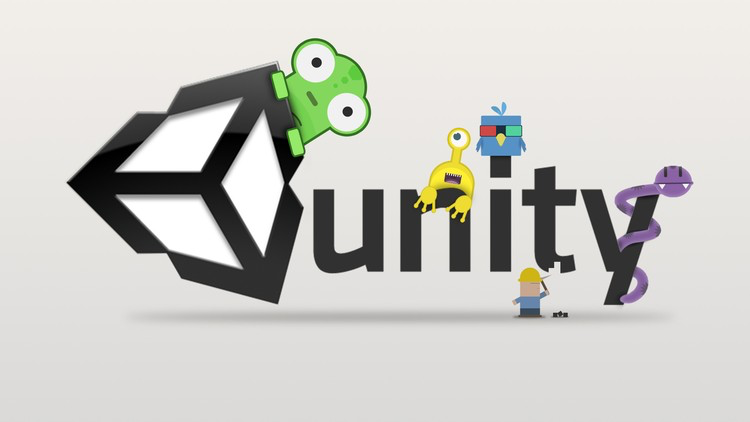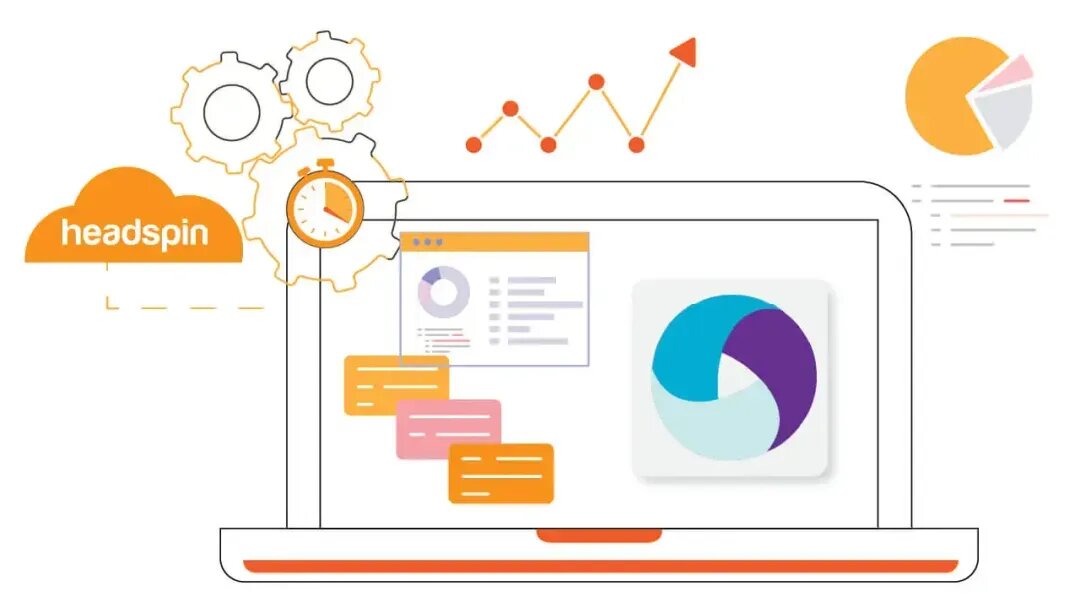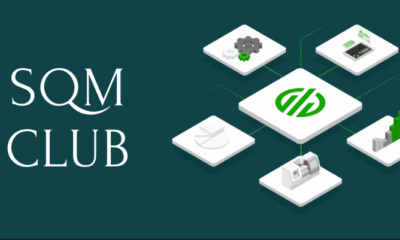Technology
What Makes Unity Game Engine the Best Game Development Platform?
Published
2 years agoon
By
Max
Making an excellent choice for a game engine is crucial to creating mobile games. The feature-rich Unity 3D engine makes creating games for many platforms that work on various devices more accessible. The game engine offers numerous resources, including immediate assets, an IDE, online community support, free tutorials, and user-friendly tools.
Unity 3D has gained popularity among developers looking to create excellent, simple, and economical 2D and 3D game ideas due to its robust feature set. Let’s briefly review this high-quality game engine before talking about the reasons for adopting it.
A Quick Overview of Unity
One of the top gaming engines is Unity, created and released by Unity Technologies. It is pretty simple to use if you are a game creator. Unity has developed a sizable fan base partly responsible for the engine’s success because of its enticing appearance.

Developers may use Unity’s AR, VR, 2D, and 3D game tools on various platforms, including mobile devices, PCs, gaming consoles, and the web. The powerful features of Unity enable developers to create photorealistic objects and cinematic animations. In addition, this game engine can now display realistic characters, engaging environments, and clearly defined objects.
Developers don’t have to transition between platforms when using Unity. Unity does, after all, offer the ease of programming game commands. Simply put, you can make fast and sophisticated games with this game engine.
Here are some facts and figures regarding Unity:
- Unity Game Engine was used to develop the top 34% of free mobile games on the Play Store and App Store.
- Unity-based mobile games account for 71% of the top 1000 games.
- By 2020, 2.8 billion people will be actively consuming content created or run by the Unity Game Engine.
- Applications created with Unity have 5 billion downloads every month.
- 94 of the top 100 development studios in the world, according to revenue, use Unity.
Principal Advantages of Using Unity in Game Development
Here are the main benefits of this game engine that are covered below to illustrate why Unity is well-known in the gaming sector:
1. User-friendliness
Utilizing Unity is more straightforward than using other technologies. When applied, other problematic technologies become more complex.
2. Support for Multiple Platforms
Multiple Operating Systems, including Steam, iOS, PCs, Macs, Android, and consoles, are compatible with Unity. As a result, Unity allows you to swiftly create various games for various platforms and create several game levels.
Every game level contains some essential components, and Unity enables you to move them to the following stage and improve the game.
3. Online instruction
The best thing about Unity is that any learner has many lessons and training videos online. Even simple and compact games can be created using Unity with enough practice.
4. The Rich Asset Store is accessible.
The Unity Asset Store offers various textures, pre-made 3D models, original animations, sounds, scripting languages, and object modelling, such as a picturesque backdrop, a well-known character, a building, etc., to game creators.
Developers don’t need to create these assets themselves because they may readily buy them. Additionally, the Unity asset shop gives musicians, artisans, and modellers the chance to increase their income.
5. Online multiplayer games
The Unity engine is used to create some of the most well-known multiplayer games. Numerous features provided by the platform enable developers to develop top-tier games for online gamers. The game production process is enjoyable and easy, thanks to Unity 3D.

6. 2D game creation
Despite being predominantly utilized for 3D game production, Unity also has tools for making 2D games. The most recent version of Unity has a built-in 2D engine and a wealth of assets to make it easier for developers to create 2D games.
Additionally, this edition enables programmers to construct 2D games for various gadgets, including gaming consoles, computers, and smartphones.
7. Community Support
From the developer team at Unity, assistance is always available. More than 2.5 million developers currently use Unity programming, and usage is rapidly rising. It is straightforward and effective to let the development team know whether the client approves or disapproves of something.
8. Availability of both Pro and Free Versions
Both the free and paid versions of Unity come with many features. You can choose the free edition to get the key features highlighted. The pro version’s features, such as feature playback, 3D composition booster, sound channel, etc., can be used to create high-end games.
You can use the free version to implement your ideas if you’re a beginning developer. But pick the pro-business plan if you want more features.
9. Superior Graphics
Unity is renowned for its top-notch, cutting-edge graphics. The game engine offers a wide range of engaging tools and rendering technology that is highly adaptable to support the creation of beautiful games. Developers may create fluid, realistic item motions in 3D games as well.
10. Reduced Coding
To use the Unity game engine, you don’t need any coding expertise or experience. Beginners who want to start game creation as a hobby or job can do it with Unity. Even though it employs Boo, JavaScript, and C#, you can still create games without writing code.
11. Bug-fixing
With Unity, changing and debugging is more straightforward and more practical. After all, you may see every game variable when playing the game. Unity is exceptional because it aids in process runtime debugging for developers.
What Are the Unity Game Engine’s Limitations?
The Unity game engine has various limits in addition to some unique benefits. Let’s clarify a few of them!
1. No references to outside code libraries
Unity does not support links to external code libraries. It is disheartening and surprising for programmers in the industry. Instead of just connecting to a shared folder, you must explicitly put the library into the project if you wish to use it.
It is challenging to employ the activities of many projects due to the inadequacy of one folder containing libraries. Although there isn’t a quick cure for this problem in Unity, version control methods rationally outweigh this inconvenience.
2. High-Priced License
Developers must obtain licences for the finest feature enhancements, deployment, and visuals. These licences are incredibly pricey.
Additionally, because of the pricey licences, using rendering, stencil help, buffer support, and other capabilities raises development costs.
3. Greater Memory Usage
The Unity engine causes games to use unreasonably more RAM. Debugging issues and OOM faults in the apps are finally made easier.
4. Code Source
Although Unity has a search feature for connected scripts, it might not be the only one. To find related scripts, you frequently have to go through every element in a scenario manually. But it would be best if you refrained from doing this time-consuming task.
What role does RisingMax Inc. play in game development?
At RisingMax Inc., we are unity game development agency for various industries. We can maximize our levels of experience and talents in game development, artwork, level design, creative jobs, testing, and production thanks to our qualified graphic designers, developers, testers, and modellers.
Do you intend to contract out the creation of Unity games? The numerous benefits of hiring a business like ours to develop your Unity game. Our game software can assist your organization in expanding if it is just starting. You don’t need to endanger your business or deplete your resources.
Contacting us is preferable because we have all the necessary equipment, experience, and knowledge to complete the job. Our company has built many games utilizing Unity during the years we have been in the mobile game development industry. Therefore, MindInventory may be a good choice if you want to create a game with Unity as quickly as possible.
You may like
Technology
Non-Functional Testing Guide: Exploring Its Types, Importance and Tools
Published
9 hours agoon
April 24, 2024By
johnsonron
Are you looking for ways to ensure your software development projects are successful? Non-functional testing is an essential part of the process, helping to guarantee that applications and systems meet the necessary non-functional requirements such as availability, scalability, security, and usability.
In this blog post, we’ll provide an overview of the basics of non-functional testing, from types of tests to use to tools for implementation. We’ll also discuss the benefits of using these tests and give tips on choosing the right ones for your project.
What is Non-Functional Testing?
Non-functional testing evaluates a software application’s non-functional attributes. This includes testing the software’s performance, load, stress, scalability, security, compatibility, and usability, among other characteristics. The primary goal is to ensure that the software behaves as expected under certain conditions that are not directly related to specific functionalities.
Key Areas of Non-Functional Testing:
Performance Testing: Measures how the software application behaves under a particular load. It evaluates the software’s speed, responsiveness, and stability under varying levels of user traffic.
- Usability Testing: Focuses on the user’s ease of using the application, its navigability, and overall user experience. It aims to identify any aspects of the software that may be confusing or frustrating for users.
- Security Testing: This ensures that software does not have vulnerabilities or threats that can lead to data loss.
- Compatibility Testing: This process checks the software’s compatibility with different browsers, databases, hardware, operating systems, mobile devices, and networks to ensure consistent behavior across various platforms.
- Reliability and Availability Testing: This assesses the software’s reliability and consistency in being accessed or used as intended over time.
- Scalability Testing: Determines the software’s ability to scale up or down in terms of its processing power or network load.
By conducting non-functional testing, developers and testers can address issues not apparent during functional testing but critical to the software’s overall quality and user satisfaction. Integrating non-functional testing into the software development lifecycle is essential for delivering a robust, efficient, and user-friendly product.
Delving into the Importance of Non-Functional Testing
In the ever-changing world of software testing, non-functional testing stands as a steadfast protector of software quality. While functional testing examines whether the software meets its basic requirements, non-functional testing goes beyond functionality. It ensures that the software performs seamlessly under various conditions, spotlighting potential issues that could arise in real-world usage.
Functional testing is like checking off a to-do list, ensuring each feature works as intended. Non-functional testing is more like stress testing – it examines how well the software handles pressure. Also, non-functional testing evaluates the software’s behavior under different user loads and scenarios.
In essence, non-functional testing uncovers hidden vulnerabilities and bottlenecks that could impact performance. Your app remains smooth even when countless users are active simultaneously. This testing method ensures that your software shines in the face of challenges, delivering a seamless experience to users everywhere.
Capturing the Essence of Non-Functional Requirements
Embarking on the non-functional testing journey necessitates a meticulous understanding of non-functional requirements—a pivotal step that sets the stage for comprehensive software evaluation. These requirements delve into the software’s behavior beyond its mere functionalities, focusing on aspects like performance, security, and user experience.
When capturing accurate non-functional requirements, the aim is to envision how the software will perform under specific circumstances. This entails envisioning scenarios such as when the application faces varying user loads—ranging from a handful to a surge in user activity. Moreover, it encompasses situations where network congestion might slow data flow or where extensive data volume could strain the software’s capabilities.
Collaboration with stakeholders is instrumental in this endeavor. Software testers gain valuable insights by engaging with individuals interested in the software’s performance, such as clients, users, and developers. These interactions facilitate a comprehensive understanding of the application’s expected behavior under diverse scenarios.
By laying this solid groundwork through accurate non-functional requirements, software testers pave the way for effective non-functional testing. This testing phase, driven by precise expectations, becomes a strategic tool for identifying potential issues, optimizing performance, and ensuring the software’s resilience when subjected to real-world demands.
Differentiating Functional and Non-Functional Requirements
| Aspect | Functional Requirements | Non-Functional Requirements |
| Focus | What the software should do | How the software should perform |
| Concerned with | Features, capabilities, behavior | Performance, characteristics, attributes |
| Examples | User authentication, search functionality | Response time, scalability, security |
| Examples | User authentication, search functionality | Response time, scalability, security |
| Testing Approach | Functional testing | Non-functional testing |
| Evaluation Criteria | Correctness, completeness | Efficiency, reliability, usability |
| Importance | Crucial for expected behavior | Crucial for performance and user experience |
| Interplay with Each Other | Functional requirements enable usability | Non-functional requirements ensure scalability |
It’s important to note that functional and non-functional requirements work hand in hand to ensure a comprehensive software testing strategy. While functional requirements lay the foundation for the software’s features and behavior, non-functional requirements guarantee optimal performance, security, and user-friendliness. Combining both requirements ensures a holistic approach to assessing and enhancing software quality.
Unveiling the Core Objectives of Non-Functional Testing: A Comprehensive Overview
Non-functional testing is a multi-faceted endeavor guided by a set of core objectives that elevate software quality to new heights. These objectives delve into various dimensions, ensuring that the software performs its functions and excels in diverse scenarios. Let’s dive into each of these objectives to understand their significance:
- Performance Assessment: Non-functional testing evaluates software responsiveness and stability under varying loads, ensuring a smooth user experience even during high demand.
- Scalability Testing: This objective examines the software’s ability to handle increased user loads without compromising performance, anticipating sudden spikes in usage.
- Security Validation: Non-functional testing identifies vulnerabilities, fortifying the software’s security to protect sensitive user data and maintain trust.
- Usability Testing: Ensuring seamless user interaction, usability testing enhances user satisfaction by pinpointing and addressing potential usability hurdles.
- Compatibility Testing: This objective validates the software’s performance across different platforms, browsers, and devices, expanding its accessibility and reach.
Defining Characteristics of Non-Functional Testing
Non-functional testing exhibits distinctive characteristics that set it apart from its functional counterpart. These include:
- Invisible Aspects: Non-functional testing goes beyond the surface and scrutinizes the hidden aspects of software, such as performance and security. It assesses intangible qualities that impact user experience, ensuring the software’s inner workings align with expectations.
- Indirect Validation: Unlike functional testing, which verifies explicit features, non-functional testing indirectly validates overall software quality. It ensures that the software not only performs tasks but does so efficiently and reliably, contributing to a seamless user experience.
- Varied Testing Approaches: Non-functional testing employs diverse methodologies tailored to specific quality attributes. These approaches collectively address performance, security, usability, and other critical factors, comprehensively evaluating software excellence.
- Realistic Scenarios: Testing scenarios in non-functional testing mirror real-world usage, simulating practical conditions. This approach unveils how the software behaves under actual user loads, network fluctuations, and other authentic situations, providing invaluable insights into its performance and resilience.
Unveiling the Advantages of Non-Functional Testing
Embracing non-functional testing yields a plethora of advantages, including:
- Enhanced User Experience: Non-functional testing stands as a guardian of user satisfaction. Rigorously assessing software performance guarantees that applications operate seamlessly, offering a responsive and smooth user experience. Just as a well-tuned instrument produces harmonious melodies, non-functional testing ensures that software delivers users an uninterrupted and enjoyable journey.
- Early Issue Identification: One of the remarkable advantages of non-functional testing is its role as a vigilant early warning system. Uncovering potential bottlenecks and vulnerabilities during the development phase allows for swift remediation before these issues escalate. Like a skilled detective, non-functional testing ensures that lurking problems are spotted and resolved well before they impact the end users.
- Cost-Efficiency: In software development, prevention is often more cost-effective than cure. Non-functional testing embodies this principle by identifying and addressing performance issues in the early stages of development. By nipping these concerns in the bud, it prevents the need for extensive and costly post-release fixes. Much like regular maintenance keeps a machine running smoothly, non-functional testing ensures that software remains efficient and trouble-free.
- Brand Reputation: In the digital age, a brand’s reputation hinges on its software’s performance. Non-functional testing contributes to a positive brand image by ensuring that software operates reliably, reflecting a commitment to excellence. Just as stellar customer service enhances a brand’s reputation, robust software performance fosters user trust and confidence. Through non-functional testing, a brand can establish itself as a reliable provider of high-quality software, forging a positive and enduring impression.
What are the Different Types of Non-functional Testing?
Performance testing is a non-functional test that evaluates how quickly a system responds to user requests and how well it performs under load. This enables businesses to identify any issues that could affect customer satisfaction due to slow response times or poor performance.
Stress testing looks at how a system behaves when subjected to extreme load levels and helps companies determine if their programs can handle increased usage. Scalability testing examines the capability of a system to scale up or down depending on the number of users and data present in it.
Security testing assesses the level of security in an application and detects any weaknesses that could put customer data at risk. Compatibility testing checks whether an application works with different operating systems, browsers, and devices so customers can access it regardless of their device’s specifications.
Overall, different non-functional testing types provide invaluable information about an application’s performance before its launch into production environments, which helps ensure customer satisfaction regarding reliability and efficiency across all platforms.
Exploring Tools for Non-Functional Testing: An Array of Options
Non-functional testing ensures that applications and systems meet essential non-functional requirements, encompassing aspects like availability, scalability, security, and usability. Achieving this objective necessitates utilizing a diverse range of automated and manual testing tools. These tools play a pivotal role in assessing performance, reliability, and security, contributing to creating robust applications. As you navigate the landscape of non-functional testing tools, consider the following pointers:
● Automated Testing Tools: These tools offer efficiency by executing tests swiftly compared to manual processes. They automate data collection, results comparison, and parallel testing across various systems or environments. Examples include:
- Apache JMeter: For load testing web applications.
- LoadRunner: For stress testing web applications.
- Selenium WebDriver: For browser automation.
- SoapUI: For API testing.
● Manual Testing Tools: When precision and complex scenarios are paramount, manual tools shine. They encompass non-functional test types like User Acceptance Tests (UAT), Smoke Tests, Regression Tests, and Exploratory Tests.
- Microsoft Office Suite Programs: Excel spreadsheets for test case creation.
- Zephyr Test Management Suite: UAT management.
- Xray Test Management Plugin: Regression tracking in JIRA Software.
- Bugzilla Bug Tracker Tool: Defect tracking during exploratory tests.
● Selecting the Right Tool:
- Cost Effectiveness: Consider budget constraints and tool pricing.
- Compatibility: Ensure alignment with existing technology stacks.
- Ease of Use: User-friendly interfaces for seamless adoption.
- Scalability: Ability to accommodate growing testing needs.
- Support Services: Evaluate vendor-provided support.
- Performance Metrics: Assess response time measurement capabilities.
- Logging Information: Ability to capture detailed logs for analysis.
- Integration: Compatibility with development frameworks like Jenkins.
- Security Certification: Look for compliance certifications like SOC2.
- Reporting Capabilities: Real-time dashboards for insights.
- Custom Solutions: Consider developing tailored solutions if needed.
Tailoring Non-Functional Testing Tools to Your Needs
Depending on their unique requirements, organizations can opt for third-party solutions or custom-built tools. While third-party tools provide off-the-shelf convenience, custom solutions allow precise alignment with specific needs, albeit with higher research and development costs.
By strategically navigating the non-functional testing tool landscape and considering these factors, developers can ensure that their applications meet non-functional requirements while delivering impeccable user experiences across diverse devices and platforms, irrespective of performance challenges and network conditions. This thorough approach paves the way for successful application launches in production environments.
How To Choose the Right Tools for Non-Functional Testing
Choosing the right tools for non-functional testing ensures that applications and systems meet quality standards. When selecting a tool, it’s essential to understand the purpose of the test as well as the desired outcome. Non-functional tests can vary greatly depending on the system, so it’s essential to determine which tests need to be performed to meet requirements.
The environment where the testing will occur is also essential, as some tools are better suited for certain environments than others. It’s worth researching different available tools and comparing their features and cost before deciding. The cost could be a significant factor while selecting a tool, but scalability and portability should also be considered if an organization plans to scale or move its operations.
Once you have selected your tool of choice, testing it in a development environment before using it in production is highly recommended. This will help identify any issues early on and ensure no surprises when deploying your application or system into production.
By following these steps, organizations can ensure they select the best non-functional testing tool for their project and meet all of their quality requirements. With careful consideration, businesses can reduce risks associated with costly failures while providing customers an excellent user experience.
Harnessing HeadSpin’s Unique Capabilities in Non-Functional Testing
Regarding efficient and comprehensive non-functional testing, HeadSpin emerges as a frontrunner. With its advanced capabilities, HeadSpin empowers software teams to conduct rigorous performance, security, and usability assessments. With real-world usage scenarios and data science-driven insights, HeadSpin equips developers to identify and address issues, ensuring high-quality, seamless software creation.
Here are additional unique capabilities of HeadSpin in the realm of non-functional testing:
- Network Condition Variation: HeadSpin enables software teams to execute testing under various network conditions, including latency, bandwidth, and packet loss, to assess performance under different connectivity scenarios.
- Load Testing at Scale: With HeadSpin, load testing can be conducted at scale, simulating thousands of concurrent users to evaluate application performance under heavy user loads.
- Comprehensive Browser Testing: The Platform offers extensive browser compatibility testing, ensuring optimal performance across a wide range of web browsers.
- Multi-Platform Compatibility: HeadSpin’s capabilities extend to testing applications on different platforms, such as Android, iOS, and more, ensuring consistent performance across various operating systems.
- Real-Time Monitoring: With an extensive global device infrastructure, HeadSpin provides real-time monitoring and analytics, allowing developers to observe application behavior and performance metrics in real-world scenarios as tests are executed.
- Third-Party Integrations: HeadSpin seamlessly integrates with popular third-party tools and frameworks, enhancing the testing ecosystem and enabling efficient collaboration within existing workflows.
- Automated Reporting: The Platform generates automated, detailed reports summarizing test results, performance metrics, and AI-driven insights for streamlined issue identification and resolution.
- Customizable Testing Scenarios: HeadSpin allows teams to create custom testing scenarios tailored to specific use cases, enabling targeted evaluation of non-functional aspects.
- Expert Support and Guidance: Alongside its tools and frameworks, HeadSpin offers expert support and guidance, assisting software teams in interpreting results, optimizing performance, and enhancing software quality.
The Way Forward
In the ever-evolving landscape of software development, non-functional testing stands as a cornerstone of software quality assurance. By meticulously assessing performance, security, and usability, non-functional testing ensures that software systems operate seamlessly, even under the most challenging conditions.
As you embark on your journey to deliver exceptional software, consider harnessing the power of HeadSpin’s specialized tools and expertise.
Elevate your non-functional testing endeavors and unlock the true potential of your software with HeadSpin.
This article originally published by:
https://www.headspin.io/blog/the-essentials-of-non-functional-testing
Technology
DevOps Test Automation: Its Significance, Types, and Tools
Published
2 days agoon
April 23, 2024By
johnsonron
Introduction
Effective software testing is a crucial aspect of development. However, manual testing poses challenges for collaboration and timely feedback among DevOps and QA teams, causing delays in release cycles. Test automation, an automated QA testing approach, addresses these issues by streamlining the review and validation processes, enhancing software quality, promoting consistent code, and improving user experience.
Moreover, it contributes to the overall satisfaction of developers. Automated testing is vital in the DevOps lifecycle, enabling continuous testing and accelerating high-quality software delivery.
This blog post will explore critical questions: why automate testing in the DevOps lifecycle, how to select test cases and construct automation flows, and how to identify the ideal DevOps software testing tool.
The Significance of Automated Testing
Continuous and automated testing significantly enhances the reliability, consistency, and efficiency of development and the final product. This streamlined process helps DevOps and QA teams adhere to timelines while preserving essential debugging and troubleshooting phases.
Moreover, test automation is faster and more efficient than manual testing, markedly reducing the risk of costly human errors and promoting seamless communication among team members. This efficiency translates to both time and cost savings.
Furthermore, test automation introduces adaptability by allowing development teams to repurpose their test scripts across related testing suites. This eliminates concerns about breaking code and the need to create new scripts for each test case, fostering a more agile testing approach.
Types of Testing in DevOps
- Unit testing entails breaking down the application into isolated units and examining the behavior of each unit independently, without considering external dependencies. It’s an initial testing layer usually conducted during the build phase.
- Integration testing assesses how multiple units are logically integrated and how this integration impacts system functionality without unintended errors. The primary objective is to validate how different modules function collectively.
- Regression testing ensures that modifications like bug fixes haven’t negatively impacted existing functionalities. Automation in regression testing helps quickly identify and address issues introduced by code changes, maintaining software reliability and bug-free performance.
- End-to-end testing mimics the user’s expectations and needs, examining the application’s functionality and performance testing in DevOps from start to finish. The goal is to validate the application’s behavior and performance as expected throughout the user’s journey.
- Exploratory testing is an advanced strategy involving simultaneous learning, testing, and reviewing various functional and visual aspects, considering the user’s perspective.
Automated testing offers numerous advantages, such as:
- Enhanced collaboration between quality assurance architects and developers, streamlining the software lifecycle.
- Facilitated scaling owing to the decentralized structure of squad-based development teams (comprising QA and DevOps teams).
- Increased customer satisfaction and referrals through quicker, more dependable product releases, addressing feedback and issues promptly.
- Simplified incident management as DevSecOps teams swiftly identify vulnerabilities across application points and threat models.
Why is Automation Vital in the DevOps Lifecycle?
If you’ve had a chance to peruse our previous blog post on the importance of test automation in DevOps, you already understand its pivotal role. However, for a quick recap, DevOps testing seamlessly aligns with agile methodologies and CI/CD. Using methodologies like CI testing, it aims to enhance flexibility and velocity. CI testing allows smoother movement through the release pipeline, minimizing bottlenecks, and expedite feedback loops. Collectively, these approaches strive for expedited delivery of high-quality product releases and updates, a departure from traditional models like the waterfall approach.
Manual execution of numerous steps in the release pipeline leads to delays and increased error likelihood. Automation injects speed and precision, enabling swift, top-notch delivery. While testing constitutes only a segment of the release pipeline, it stands out as a clear candidate for automation.
Tedious and repetitive tasks like regression testing can be efficiently automated, liberating testers to focus on tasks demanding their human expertise rather than mundane, robotic actions.
How to Select Test Cases and DevOps Test Automation Workflows
After gaining a solid understanding of test automation and its integration with DevOps, let’s delve into the implementation phase.
To seamlessly incorporate automated CI testing into your DevOps lifecycle, it’s essential to map out your release pipeline. Follow these steps:
- Identify All Stages of Your Release Understand the critical stages of your release.
- Identify Gates and Requirements Pinpoint the necessary gates and requirements during a build’s journey to production.
- Determine Feedback Mechanisms Identify feedback mechanisms vital for swift error detection and resolution.
- List Operational Procedures Enumerate all operational procedures, services, and actions in a release cycle.
The subsequent crucial step involves constructing your automation flows. The ease and speed of this process and the approach you’ll undertake largely depend on the tool you choose. We’ll delve deeper into tool selection in this blog post.
In addition to selecting the appropriate test automation tool, having a well-defined test automation strategy and familiarizing yourself with best practices is highly recommended.
Best Practices to Kickstart Test Automation:
- Gradual Automation Flow Development: Begin by automating simple, repetitive flows, gradually expanding coverage. These uncomplicated yet time-consuming flows often consume a significant portion of testing efforts.
- Sequential Testing Approach: Test one aspect simultaneously to simplify error detection when a test case fails. Crafting reusable components with your automation tool is advised, allowing for efficient logic reuse and streamlined test case creation.
- Independence and Self-Containment: Construct automated test cases that are distinct and self-contained. While flow structures can be reused, keeping tests separate allows for convenient scheduling and parallel execution across various environments.
- Shared Responsibility for Automation: Promote team collective ownership of test automation. Opt for a test automation platform accessible to all team members, ensuring automation integrates into their daily work seamlessly.
How to Select the Perfect Test Automation Tool for DevOps
The final stride in automating CI testing within the DevOps lifecycle involves choosing the right tool. The plethora of test automation tools available necessitates careful consideration, given their direct impact on the agility of your DevOps lifecycle. Quality delivery at speed, a fundamental DevOps objective, hinges on selecting the ideal tool for your team.
Among the popular options is Selenium, a favored open-source tool. However, it’s prudent to grasp the workings of these tools before investing time and effort.
To aid in your decision-making, we’ve outlined essential features and capabilities ideal for a test automation tool in DevOps. Whether you lean towards Selenium or another tool, these considerations remain pertinent. Selenium automation offers valuable insights for those interested in Selenium.
A robust DevOps test automation tool should
- Be user-friendly for testers, developers, operations personnel, and management.
- Integrate seamlessly into your CI/CD pipeline and with CI/CD tools.
- Operate efficiently across diverse infrastructures.
- Minimize maintenance efforts for automation cases.
- It does not necessitate users to write code, regardless of the complexity of their automation needs.
- Allow testers to focus on their primary responsibility of scrutinizing the end product.
- Offer a short learning curve to avoid disruptions in release cycles.
- Promote easy collaboration on automation cases.
Finding the Right Balance in DevOps Test Automation
Like any tool, test automation requires a thoughtful approach to implementation. Automation can inadvertently generate more work than it streamlines if not approached mindfully. Here are key considerations when contemplating the extent of test automation:
- Tool Integration: Assess if you’re integrating excessive tools into your project. Overlinking tools can complicate automation setup and maintenance. Prioritize and consolidate tools according to each process stage to streamline automation implementation.
- Effectiveness of Automation: Evaluate if automation can effectively measure what you’re testing for. Certain aspects, such as user experience, often necessitate human intervention for accurate feedback. Automation might not be appropriate in these scenarios.
- Value Addition: Ask whether the automation test adds value. Efficiency gains through automation are meaningful only if the test itself holds significance. Automation should be a pragmatic means to an end, aligning with the overall testing goals.
It’s crucial to emphasize that automated testing only partially replaces the need for manual testing. Maintaining a manual step or two, notably where automation lacks value, can save valuable team time.
How HeadSpin Enhances Test Automation in the DevOps Workflow
HeadSpin, a comprehensive mobile application testing platform, offers powerful capabilities tailored to optimize DevOps testing processes. From automated functional and visual testing to real device automation and seamless integration with popular testing frameworks, HeadSpin empowers teams to ensure the quality and reliability of their mobile applications. With a focus on continuous integration and end-to-end testing, HeadSpin is pivotal in enabling agile, efficient, and user-centric development practices.
- Mobile Functional Testing: HeadSpin allows for automated functional testing of mobile applications. This capability is crucial for incorporating test automation into the DevOps pipeline. Automated functional tests can be integrated into the CI/CD process, enabling rapid and continuous validation of application functionality with each code change.
- Continuous Integration and Continuous Deployment (CI/CD) Integration: Integration with CI/CD pipelines is vital for a seamless DevOps process. HeadSpin can be integrated into the CI/CD pipeline to automate the execution of mobile tests. This ensures that as new code is committed, automated tests are triggered automatically, providing rapid feedback on the application’s functionality and performance.
- Real Device Automation: HeadSpin’s extensive global device infrastructure supports automation on real devices, allowing for comprehensive testing across different devices and platforms. Automating tests on real devices ensures that the application behaves as expected in a real-world environment, aligning with the DevOps principle of testing in a production-like setting.
- Integration with Testing Frameworks: HeadSpin integrates with popular testing frameworks such as Appium, Selenium, and others. This integration allows testing teams to use their preferred testing frameworks for automation, promoting consistency and efficiency in the test automation process within the DevOps workflow.
- Error Tracking and Reporting: HeadSpin allows real-time error tracking and reporting, providing actionable insights into application performance issues. This capability is vital for DevOps teams to identify and address errors swiftly, contributing to faster and more reliable releases through efficient issue resolution.
Conclusion
Striving for 100% test automation may not always be an organization’s best approach. It’s essential to pinpoint specific areas within your testing process that will reap the maximum benefits from automation. Select an appropriate test automation framework that aligns with your organization’s capabilities and the complexity of your applications.
Efficiency is key. Testing shouldn’t consume days or weeks; automation should enable frequent and early testing to minimize production errors and enhance customer satisfaction. Within the DevOps paradigm, emphasizing comprehensive and quality test reporting is a priority, ensuring a robust testing ecosystem.
Unlock the potential of seamless software development and deployment with HeadSpin’s advanced test automation solutions. Streamline your DevOps lifecycle, enhance collaboration, and accelerate releases without compromising quality.
This article originally published by:
https://www.headspin.io/blog/devops-test-automation-a-comprehensive-overview
Technology
Codeless Automation Testing- All you need to know
Published
1 week agoon
April 16, 2024By
johnsonron
With the growing complexities of software applications, the need for no-code test automation has risen significantly. Additionally, the dynamic consumer demands make it crucial for app-developing brands to deliver exceptional user experiences to ensure good customer loyalty and brand reputation. Of the major automation tools, several enterprises choose Appium as their primary for their mobile app automation owing to multiple competitive advantages. It’s open-source and cost-effective, which helps not only large enterprises but also growing businesses adopt this tool. However, gaining expertise in using the tool is often time-consuming and complex. Codeless or no-code automated testing has emerged as a game-changing approach that addresses this challenge.
No-code test automation offers unprecedented efficiency, accessibility, and collaboration. By eliminating the need for extensive programming knowledge, it empowers testers of all technical backgrounds to actively participate in the automation journey.
Today, no-code test automation tools have gained significant popularity in the industry. The demand for these tools has increased as organizations strive to accelerate their testing processes and involve non-technical team members in no-code automated testing.
What is Codeless Test Automation?
Codeless test automation creates automated tests without writing a single line of code. It utilizes a graphical user interface with pre-built functions and logic to define test scenarios, making it accessible to individuals who may not have extensive programming knowledge. This approach is gaining traction as it democratizes test automation, allowing testers and business analysts to contribute directly without a steep learning curve.
The Difference Between Code-Based and Codeless Automation
Understanding the distinction between code-based and codeless automation is crucial:
- Code-Based Automation: Requires testers to write scripts in a programming language. This method offers flexibility and control but demands technical expertise and is time-consuming.
- Codeless Automation: Allows testers to create tests using a visual interface. This method is faster and more accessible but may offer less flexibility in complex test scenarios.
Benefits of Codeless Testing
Codeless test automation, particularly when implemented with solutions like HeadSpin, offers numerous advantages:
- Accessibility: Enables non-programmers to design and execute tests, broadening the testing team’s capabilities.
- Efficiency: Reduces the time needed to create and maintain tests, accelerating the testing cycle.
- Cost-Effectiveness: Lowers the barrier to entry for automation, potentially reducing the costs associated with training and hiring specialized personnel.
- Scalability: Facilitates easy updates and test modifications, supporting agile development practices.
By incorporating codeless test automation, teams can focus more on test strategy and quality assurance rather than the intricacies of coding.
This article is originally published on:
https://www.headspin.io/blog/codeless-appium-test-automation-with-headspin

Non-Functional Testing Guide: Exploring Its Types, Importance and Tools

DevOps Test Automation: Its Significance, Types, and Tools

wellhealthorganic.com : morning coffee tips with no side effect

Get your Canadian visa in a jiffy – Hong Kong citizens can now apply online!
BiharMasti: The Place to Download Bhojpuri Movies and Music

What states have no chase law for motorcycles
Trending
-

 Business1 year ago
Business1 year agoGet your Canadian visa in a jiffy – Hong Kong citizens can now apply online!
-

 Tips & Tricks2 years ago
Tips & Tricks2 years agoBiharMasti: The Place to Download Bhojpuri Movies and Music
-

 Law1 year ago
Law1 year agoWhat states have no chase law for motorcycles
-

 Technology2 years ago
Technology2 years agoHow to do Jio Prepaid Recharge Online
-

 Lifestyle1 year ago
Lifestyle1 year agoWhat is a lifestyle party? Few tips for hosting a lifestyle party
-

 Tech1 year ago
Tech1 year agoHow to Use Employee Feedback Software to Improve HR and Management Game
-

 Technology2 years ago
Technology2 years agoHow to Download Punjabi Movie Chhalla Mud Ke Nahi Aaya?
-

 Business1 year ago
Business1 year agoEverything You Need to Know About SQM Club





